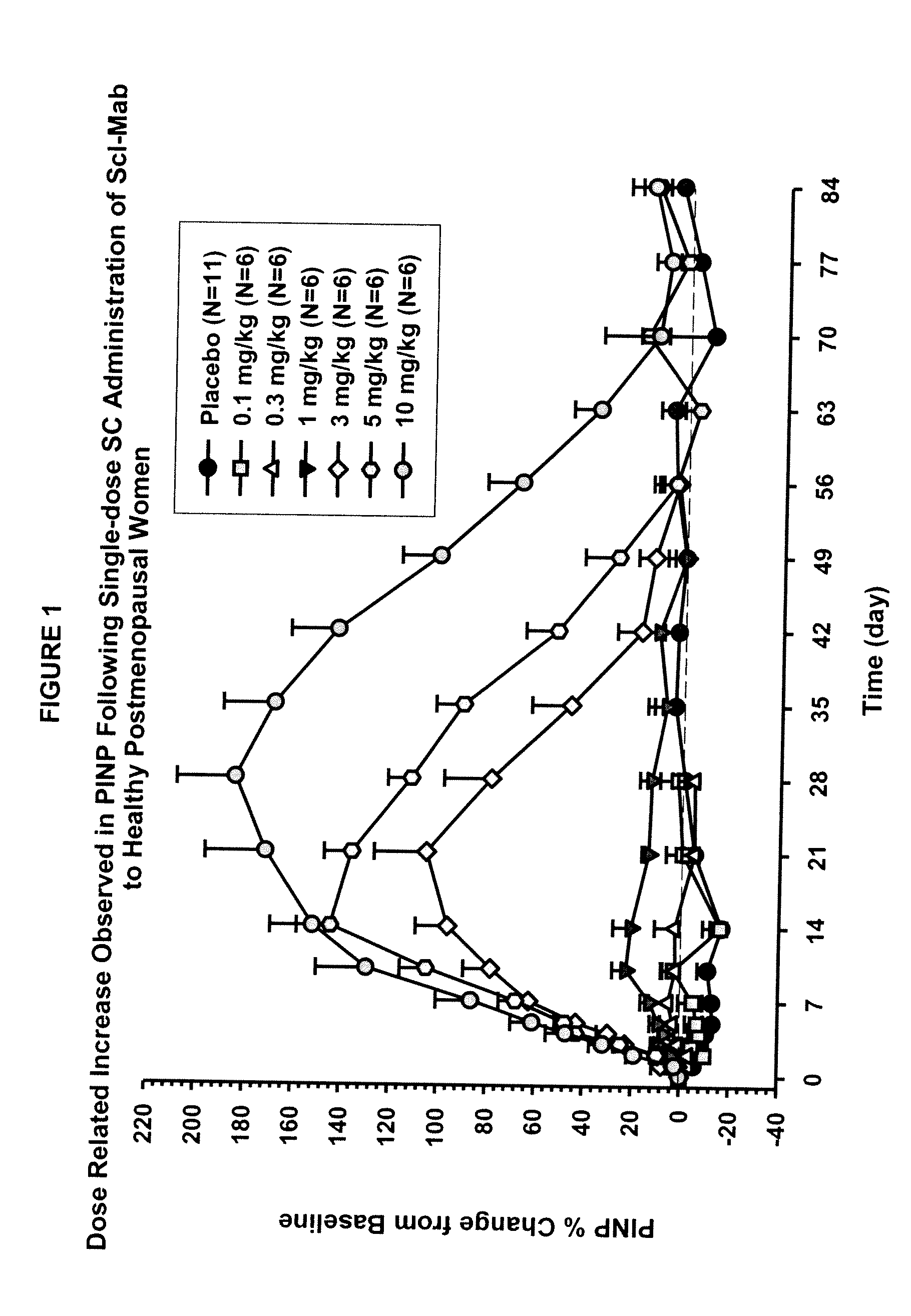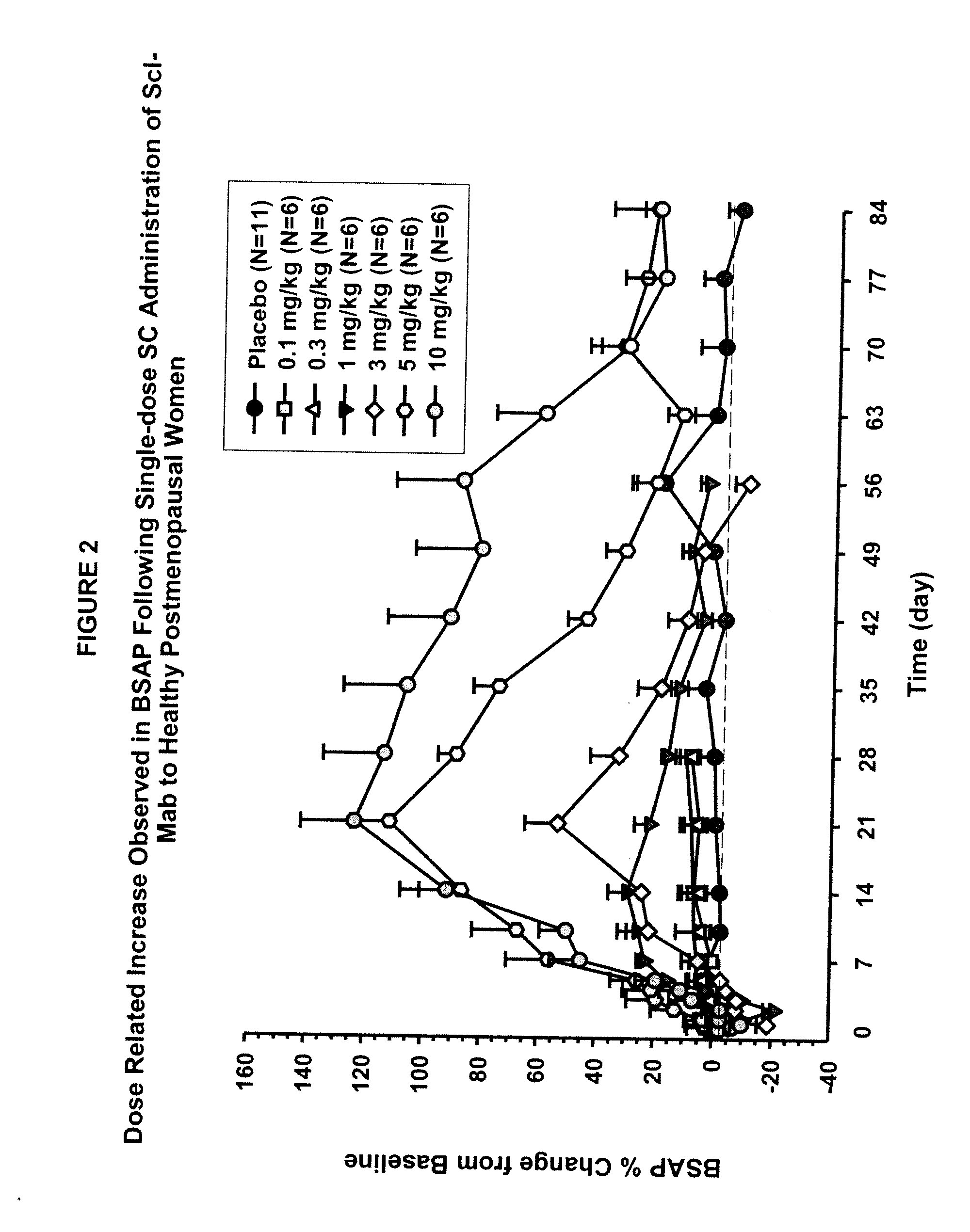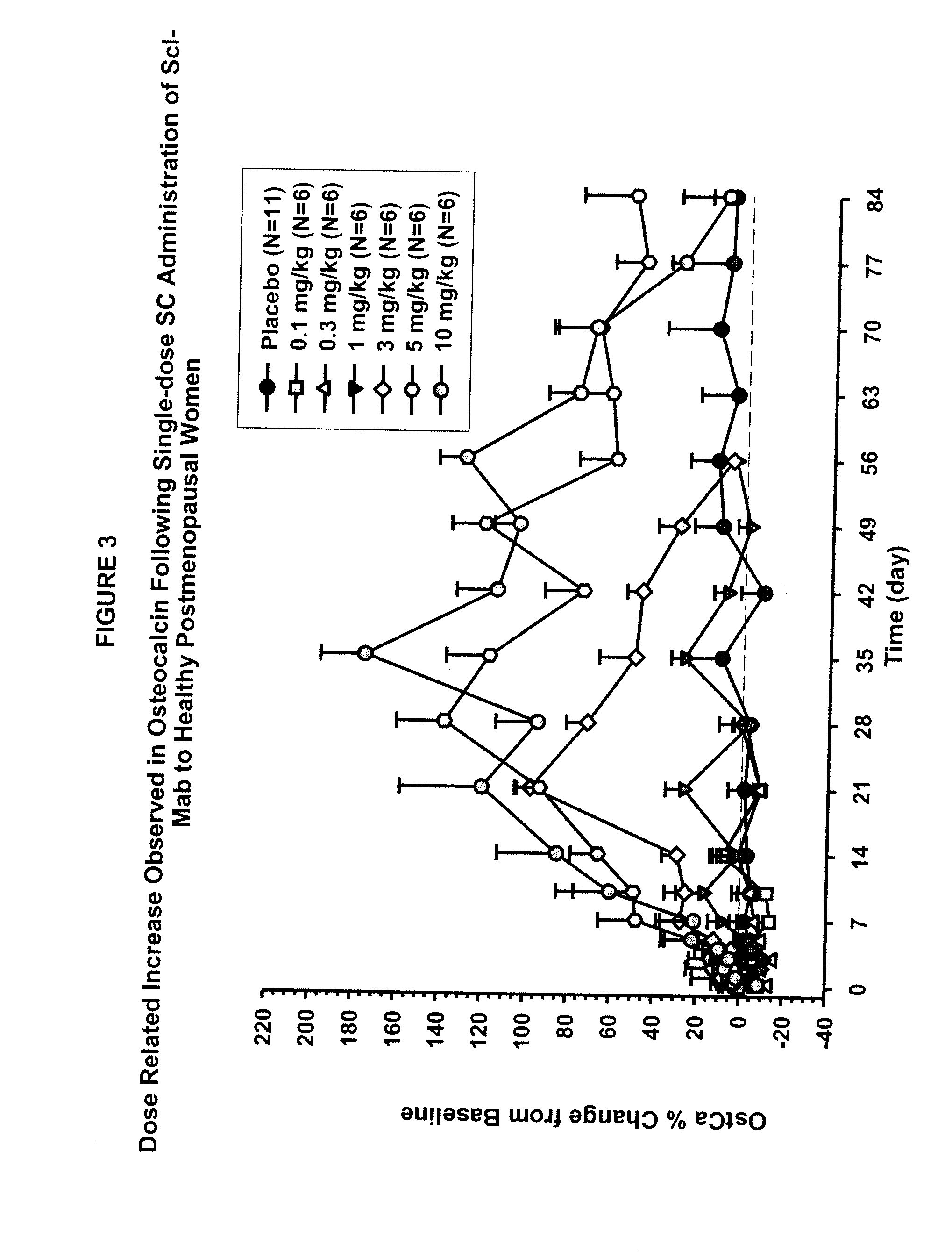Method for inhibiting bone resorption
a bone resorption and bone resorption technology, applied in the field of sclerostin binding agents, can solve the problems of increasing the fragility and susceptibility of skeletal bone fracture, significant medical problems, and high patient discomfort and high cost, so as to reduce the level of a marker of bone resorption and inhibit bone resorption. , the effect of increasing the level of a marker of bone formation
- Summary
- Abstract
- Description
- Claims
- Application Information
AI Technical Summary
Benefits of technology
Problems solved by technology
Method used
Image
Examples
example
[0099]This example describes in vivo studies wherein a sclerostin binding agent reduced the level of a marker of bone resorption and increased the level of one or more markers of bone formation.
[0100]A single-center, randomized, double-blind, placebo-controlled, ascending single-dose study in healthy men and postmenopausal women was conducted. Approximately 72 subjects enrolled in one of six dose cohorts. For cohorts 1, 2, 3a, 4, 5 and 6a, eight healthy postmenopausal women were randomized to receive a sclerostin binding agent or placebo via subcutaneous injection in a 3:1 ratio at dose levels of 0.1 mg / kg, 0.3 mg / kg, 1 mg / kg, 3 mg / kg, 5 mg / kg, or 10 mg / kg, respectively. In cohorts 3b and 6b, 8 healthy males received the sclerostin binding agent or a placebo intravenously and subcutaneously in a 3:3:1:1 ratio (sclerostin binding agent intravenously: sclerostin binding agent subcutaneously: placebo intravenously: placebo subcutaneously) at a dose level of 1 mg / kg or 10 mg / kg (reduced...
PUM
| Property | Measurement | Unit |
|---|---|---|
| time | aaaaa | aaaaa |
| time | aaaaa | aaaaa |
| time | aaaaa | aaaaa |
Abstract
Description
Claims
Application Information
 Login to View More
Login to View More - R&D
- Intellectual Property
- Life Sciences
- Materials
- Tech Scout
- Unparalleled Data Quality
- Higher Quality Content
- 60% Fewer Hallucinations
Browse by: Latest US Patents, China's latest patents, Technical Efficacy Thesaurus, Application Domain, Technology Topic, Popular Technical Reports.
© 2025 PatSnap. All rights reserved.Legal|Privacy policy|Modern Slavery Act Transparency Statement|Sitemap|About US| Contact US: help@patsnap.com



